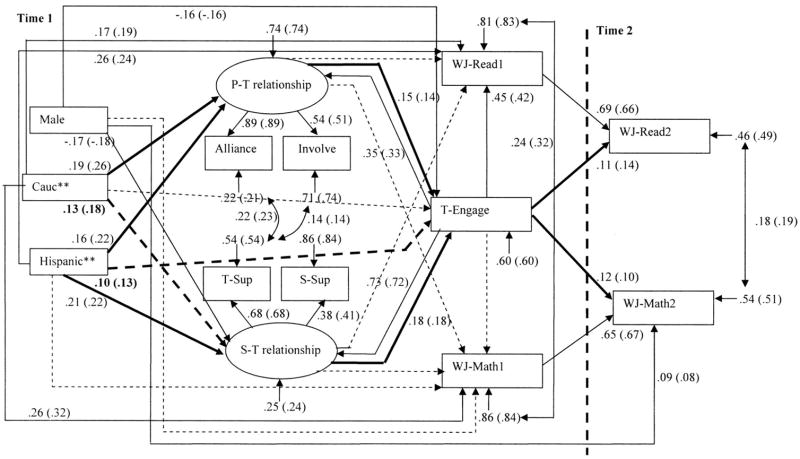Figure 2.
Modified theoretical model with the relationship constructs and teacher-perceived engagement as mediators (adjusted for dependency).χ2(29) =73.20, p<.001; comparative fit index =.96; root-mean-square error of approximation =.059; standardized root-mean-square residual =.062. To reduce the complexity of the figure, we included only coefficients significant at p<.05. All coefficients are standardized (N =443). Coefficients in parentheses are based on the full information maximum likelihood (FIML) procedure with full data (N =742). The dashed paths indicate nonsignificant effects. The bolded dashed paths indicate inconsistent findings between the complete data (N =443) and the full data using the FIML procedure (N =742); for example, the path coefficient from Caucasian to student–teacher relationship was nonsignificant ( p<.10) for the complete data (N =443) but significant ( p<.05) for the full data (N =742). Asterisks indicate variables are dummy coded, with African American students as the reference group. See Figure 1 caption for details on variables.

